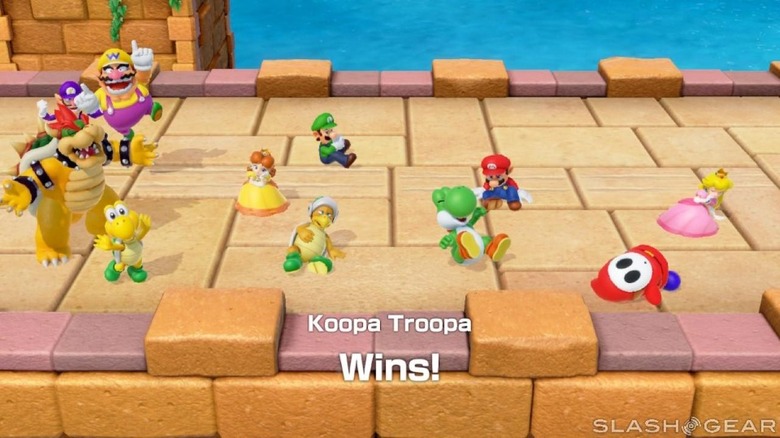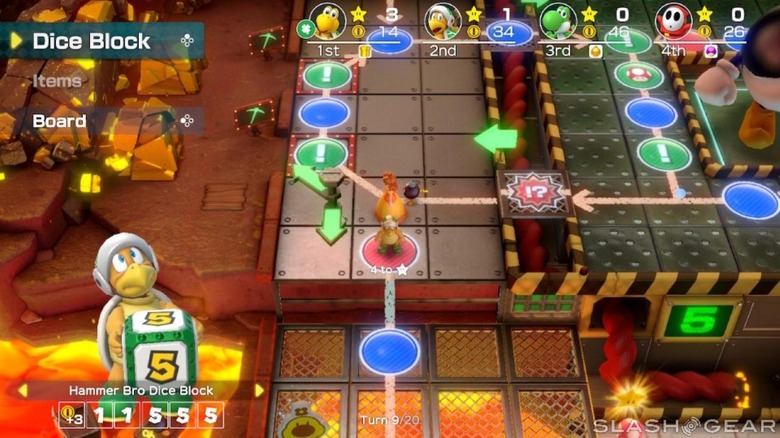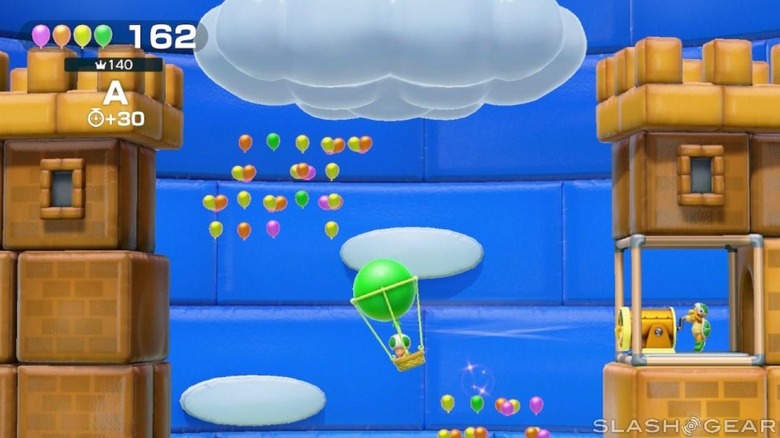Super Mario Party Review: Phone A Friend
- Mario Party returns to its traditional formula
- River Survival and Partner Party are great additions to the main game mode
- Minigames are consistently great
- Playing with a full group of people is a blast
- Boards are tiny and there aren't enough of them
- Online mode leaves a lot to be desired
- Not a good buy for those playing alone
I have to admit, I have a strange history with the Mario Party series. I've been playing since the very first game launched on the N64 back in 1998, and while I've always been entertained by them, there's always been this voice at the back of my head saying "you know this probably isn't very good, right?" Still, I would play them, and I never really listened to that voice until Mario Party 9 rolled around. In that game, Nintendo decided that having everyone move around the game board individually wasn't a good idea and plopped them all in a car that meant they'd be stuck side-by-side for the entire match. Why? I don't know. Reasons, I guess.
There probably is a good reason why Nintendo chose to have everyone move around the board together, but to be honest, I've never really cared enough to seek it out. All I know is that I didn't like it, and as someone who never had any real attachment to the Mario Party series, I dropped it faster than NBC dropped that Friends spin-off starring "Dumb, Handsome Friend" or whatever his name was back in the early aughts.
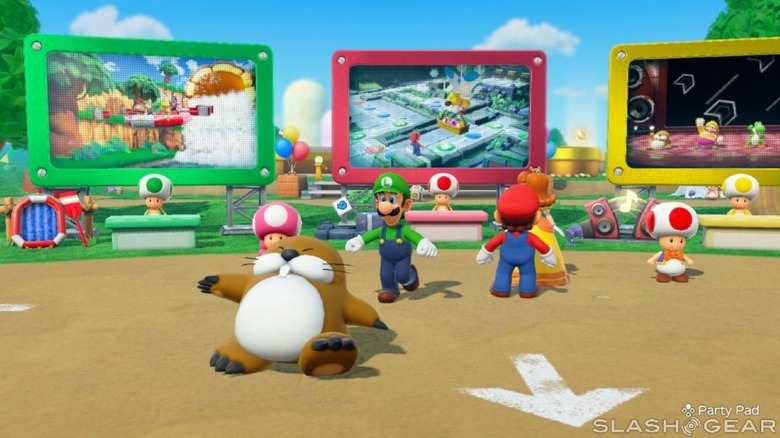
Me and old Mario Party haven't spoken in almost a decade at this point, as Mario Party 10 kept the car-based gameplay that some people apparently found thrilling and its handheld entries didn't seem like anything I'd want to play. Then Nintendo announced Super Mario Party for the Switch, and when I saw that everyone was back to moving around the board individually, I started to get excited again.
Of course, returning alongside my interest in the series is that voice in the back of my head telling me that game I'm playing isn't very good. While it may have been correct about previous entries in the series, I don't think it is with Super Mario Party. At least, it isn't entirely correct.
Multiplayer is the star
Let's just get this out right at the start: Super Mario Party is an absolute blast to play with friends, despite whatever flaws it might have. There are certainly a few flaws worth talking about too, but we'll get to those in a moment. For now, I think it's safe to say that if you have one to three willing friends who like the Mario mythos and will commit a few nights to playing this game with you, you probably won't be disappointed in it.
Super Mario Party succeeds as a multiplayer game even with some problems that are difficult to ignore. Gone are the massive, sprawling boards of past Mario Party games, and the option to play 50-turn games went with them. In Super Mario Party, the longest a game can go is 20 turns, and all the maps are quite a bit smaller than what you might expect from a Mario Party game. On top of that, there's only four regular boards in all, and one of them needs to be unlocked by completing the other three.
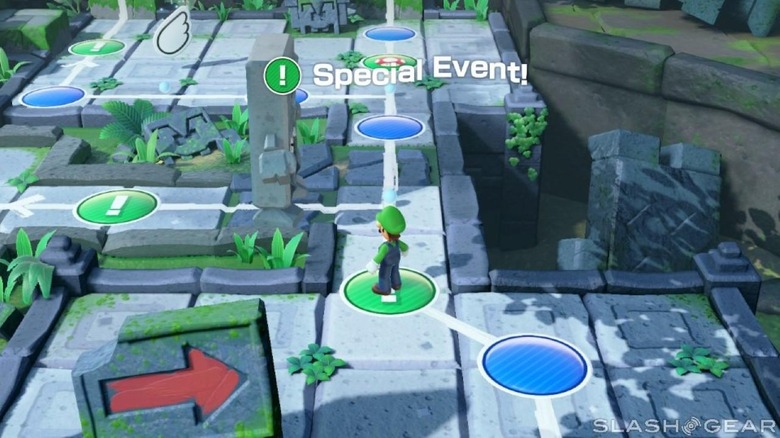
I'll admit that for the Mario Party faithful, that last paragraph probably doesn't paint a very pretty picture. 50-turn games are sort of a staple of Mario Party gatherings, and big boards have been around since the inaugural game in the series. Indeed, it can be a bit jarring to dive into Super Mario Party expecting what you're used to and be greeted by, well, less. If that makes you not want to buy Super Mario Party, I can't say that I blame you.
Do those changes make Super Mario Party a worse game than its predecessors, though? I don't think they do. As someone who used to love subjecting my friends to 50-turn games of Mario Party, I was definitely disappointed that I didn't have the same option here. However, after jumping into the game's main mode – simply called Mario Party – and checking out these maps for myself, the lack of large boards and a 50-turn limit isn't nearly as bad as I thought it would be.
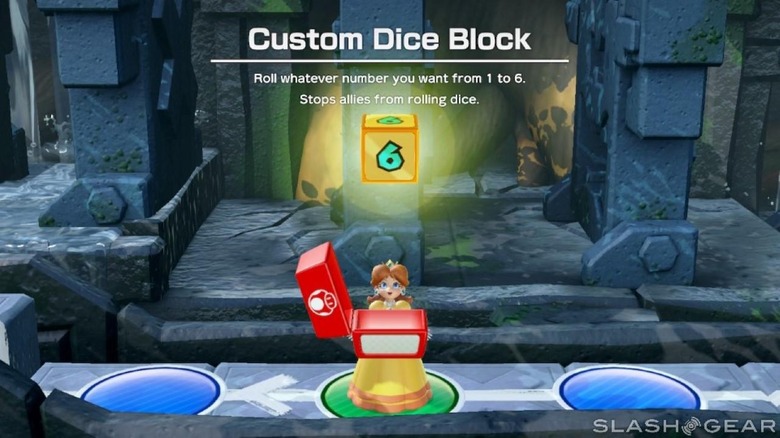
To start, there's a lot crammed into these tiny boards, to the point where every round feels like it has some kind of impact on the game. With smaller layouts, players land on special spaces – which I consider to be anything other than the regular blue and red spaces – much more frequently, which in turn means that events are happening more often. Sometimes these events are bad news for you, so the idea that there are more of them might be disappointing for people who don't like getting hosed by random occurrence, but I tend to think that it's better to have things happening even if it means I come out the loser sometimes.
To put this in perspective, I had a four-player, 20-turn game that ended with the four players in possession of something like 25 stars between them, before bonus stars were handed out. On larger maps, collecting stars (having the most stars at the end means you win the game, for the uninitiated) was often a long process, but that's no longer the case on these boards. Our collective star count means that we were averaging slightly more than one star per round, so if there is such a thing as high intensity Mario Party gameplay, that was it.
Choose your allies wisely
Part of what made that possible is Super Mario Party's new ally system along with the fact that each character now has the choice of rolling a standard die that shows 1-6 or rolling a die that's unique to them. There's enough variance between those character-specific dice that they add a feeling of identity to Super Mario Party's otherwise evenly-matched roster, and when you toss allies into the mix, your dice options grow even larger.
Landing on an ally space lets you randomly recruit another of Super Mario Party's 20 characters (four of whom are unlockable) and have them join you for the rest of this game. What does this mean? It means that you get to add their character die to your pool of dice, and that they'll also augment each of your rolls with dice rolls of their own. The dice that allies roll can only result in a 1 or 2, but when you consider that you can have a maximum of four allies, there's the potential for your allies to greatly influence the number of spaces you can move on any given turn.
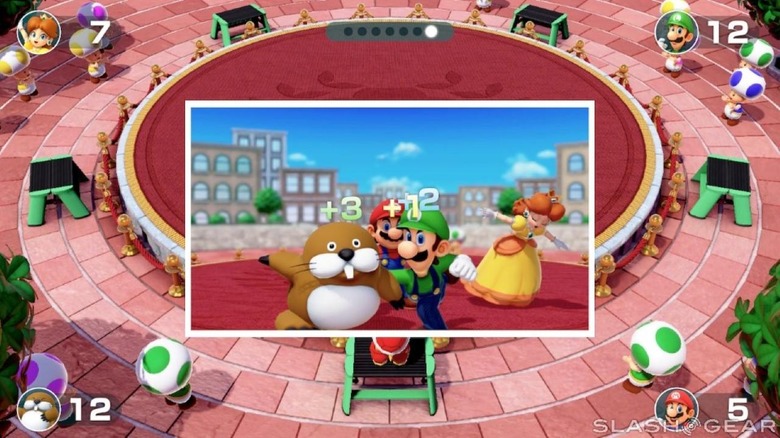
In my experience, allies are easily the most contentious part of Super Mario Party. If someone lucks into multiple allies early, it's easy for the other players to begin feeling like they have no hope of catching up as that ally-rich player zips around the board. Things tend to have a funny way of evening out over the course of a Mario Party match, but that's little comfort to the person who has been trying to get an ally all game so they can keep pace with others but hasn't had any luck.
Luck is, in fact, something we need to talk about with Super Mario Party. Luck plays a huge factor in Super Mario Party, and sometimes, it'll feel like you'll lose games through no fault of your own. Though there is some skill in winning the minigames that are played after each round, success is the rest of the game is largely down to how lucky you get with your dice rolls. For some, this isn't a problem, but Mario Party's over-reliance on luck as a mechanic has been drawing criticism since the series started back in the days of the N64.
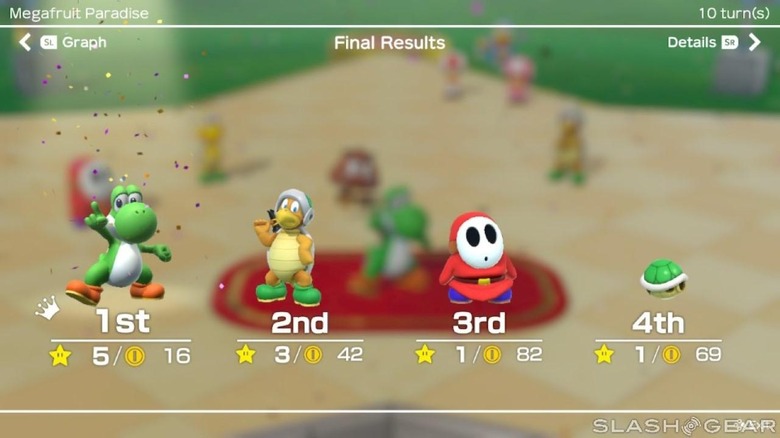
Personally, the thing that determines if I have fun playing Mario Party is whether or not I'm playing with friends, and I've never been one to care much about the luck factor. For others, the fact that you need to get lucky in order to win is a major drawback. That's fine, of course, but if that's how you feel, you should probably give this entry a pass, because match results are no less dependent on luck than they have been in the past.
So, as far as Super Mario Party's main game mode is concerned, I have to say I was pleasantly surprised by how much I liked it. There's still no getting around the disappointment that there's only four maps to play in Mario Party mode, though. I hope Nintendo eventually adds more through post-launch DLC, but honestly, there should have been more at release.
A strong minigame selection
The minigames – arguably the main draw of Mario Party, depending on who you talk to – are solid throughout. In fact, I'm tempted to argue that this is the strongest collection of minigames we've ever seen in a Mario Party title, but considering the now thousand-plus minigames that have featured in the series, that's a difficult call to make. Many minigames have some kind of motion control component to them, but it's never anything too demanding. I tend to hate motion controls too, so it should say something that I don't really mind them in Super Mario Party's minigames.
There are plenty of other modes to check out once you've had your fill of Mario Party mode. One of the most interesting is Partner Party, a 2-vs-2 mode that removes the linear layout of boards. In its place is a grid-based movement system, which gives Partner Party a somewhat tactical feel. Perhaps this was put in place because Nintendo was getting sick of hearing that strategy plays no role in Mario Party? Whatever the reason, I'm glad that it's here, because it offers a nice diversion from the standard Mario Party formula. For that matter, I wouldn't be surprised to learn that there are some folks who prefer Partner Party to standard Mario Party.
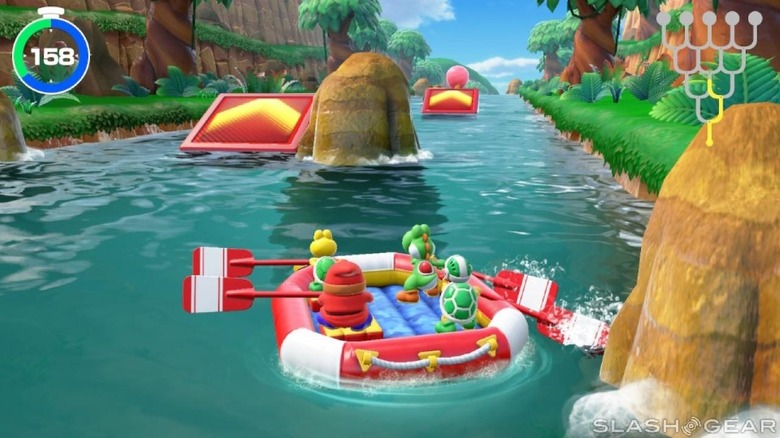
Then there's River Survival, which is an entirely cooperative mode that has you racing against the clock in a river adventure with three other players. It sounds a little weird from the description, but trust me on this, it's great. Trying to organize the rowing of four different players is a hectic-yet-fun experience, and the cooperative minigames you can play in the mode are all great. I think out of all the game modes, my friends and I had the most fun playing River Survival, and it'll be one of the first things I show to people when I introduce them to Super Mario Party from here on out.
Those are the three major modes, but there are few other things to check out in the game's Party Plaza. This includes the Minigames room, which is where you can play through a Mariothon – a series of minigames played one right after the other – or simply play through the minigames you've unlocked in other modes.
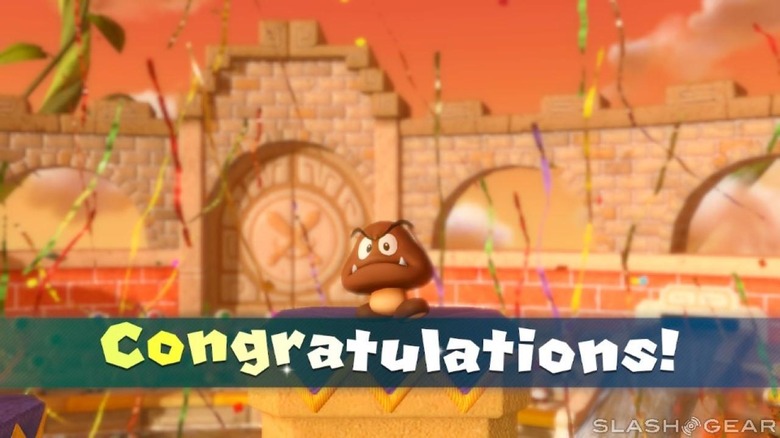
There's also the Online Mariothon, which serves as the game's sole online mode. I don't see many people spending a lot of time here, and it really feels like Nintendo dropped the ball with online play in Super Mario Party, especially when matches in the Mario Party mode are so short to begin with. If you're looking for something to justify the cost of your Switch Online subscription, you should probably look elsewhere, because Super Mario Party's online functionality leaves a lot to be desired.
Wrap-Up
Where does all of this leave us? Super Mario Party is definitely a strange game in that I don't think it offers a very good solo experience. If you'd primarily be playing this game alone, I'd say to give it a pass, because I can see it becoming boring very quickly. There is a mode that's strictly single player in Challenge Road, but even then, you're merely playing minigames and completing challenges. In short: It isn't a particularly compelling reason to play this game on your own.
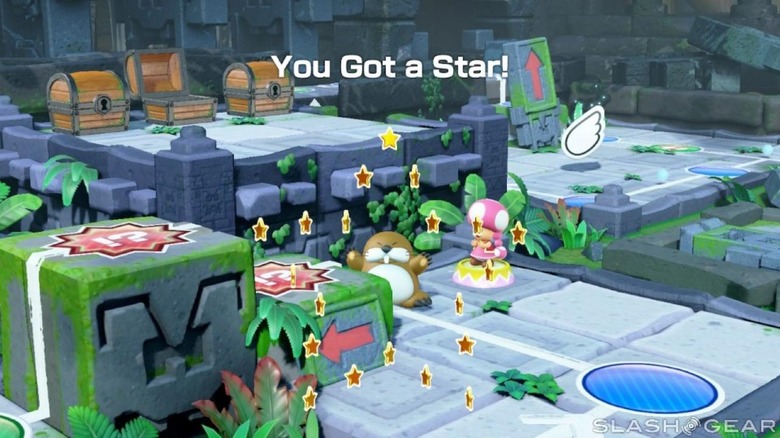
Gather up a few friends, though, and Super Mario Party transforms into a wonderful experience. Allies might be a bit overpowered and the lack of boards will likely leave you and your friends wanting more, but Partner Party and River Survival are both great modes that can be played over and over again. Even the main Mario Party mode has a lot going for it when you've got four living, breathing people playing alongside one another, despite its flaws.
If you can get a group of people to play this game on a somewhat regular basis, then Super Mario Party is a great buy. It definitely isn't going to win any Game of the Year awards, but it could very well be the essential party game on the Switch for years to come. Here's hoping Nintendo decides to support this game with some extra content down the road to make it an even better party experience.

